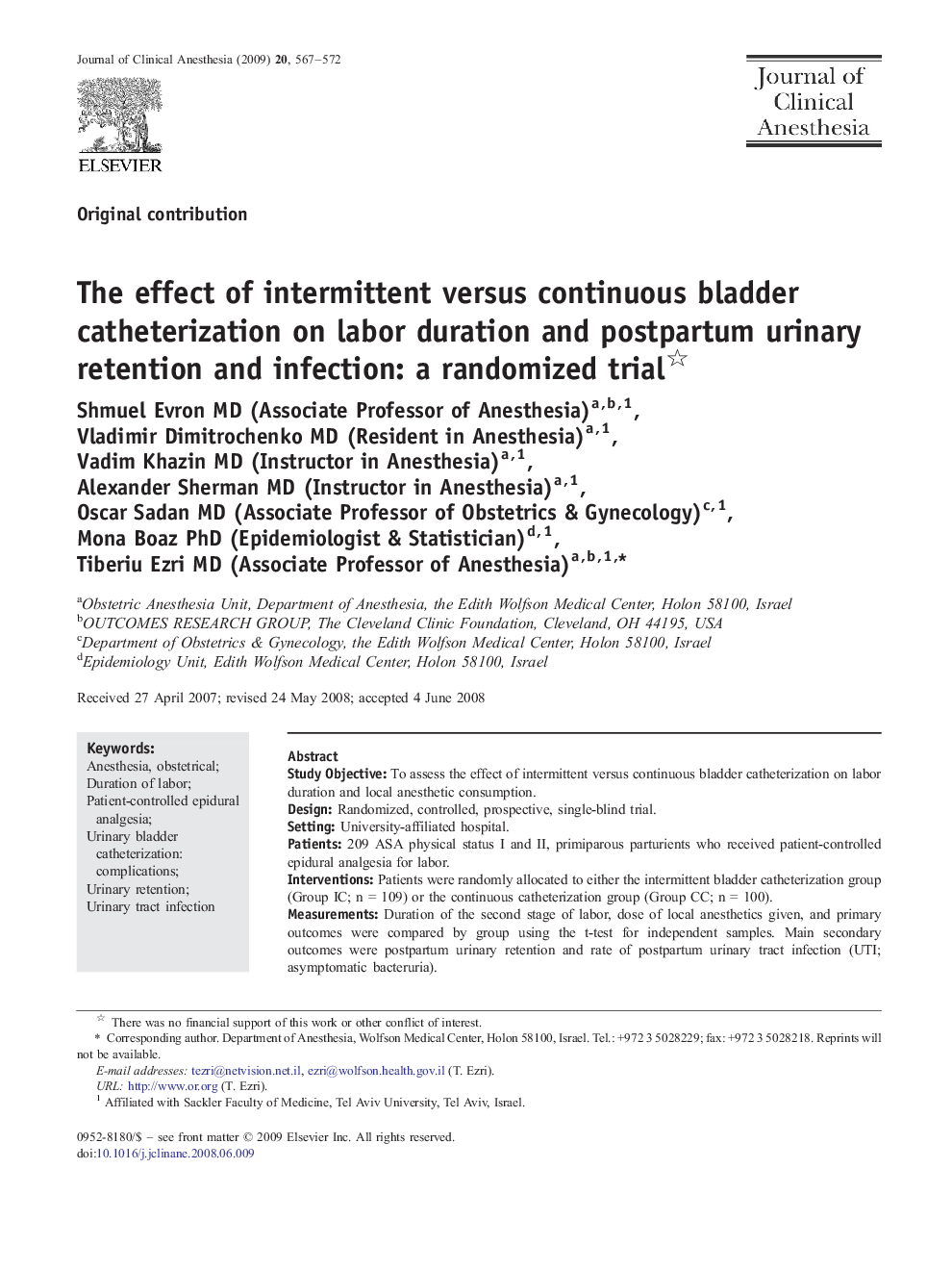| Article ID | Journal | Published Year | Pages | File Type |
|---|---|---|---|---|
| 2764088 | Journal of Clinical Anesthesia | 2008 | 6 Pages |
Study ObjectiveTo assess the effect of intermittent versus continuous bladder catheterization on labor duration and local anesthetic consumption.DesignRandomized, controlled, prospective, single-blind trial.SettingUniversity-affiliated hospital.Patients209 ASA physical status I and II, primiparous parturients who received patient-controlled epidural analgesia for labor.InterventionsPatients were randomly allocated to either the intermittent bladder catheterization group (Group IC; n = 109) or the continuous catheterization group (Group CC; n = 100).MeasurementsDuration of the second stage of labor, dose of local anesthetics given, and primary outcomes were compared by group using the t-test for independent samples. Main secondary outcomes were postpartum urinary retention and rate of postpartum urinary tract infection (UTI; asymptomatic bacteruria).Main ResultsDuration of the second stage of labor was longer in Group CC than Group IC: 105 ± 72 vs. 75 ± 52 min (P = 0.002). This finding was associated with increased local anesthetic dose requirement in Group CC during both stages of labor (73 ± 25 mL vs. 63 ± 26 mL; P = 0.005). The rate of UTI was similar (30%) in both study groups.ConclusionIntermittent bladder catheterization was associated with shorter second-stage labor and less local anesthetic, but the same frequency of postpartum urinary retention and UTI was seen with both catheterization groups.
